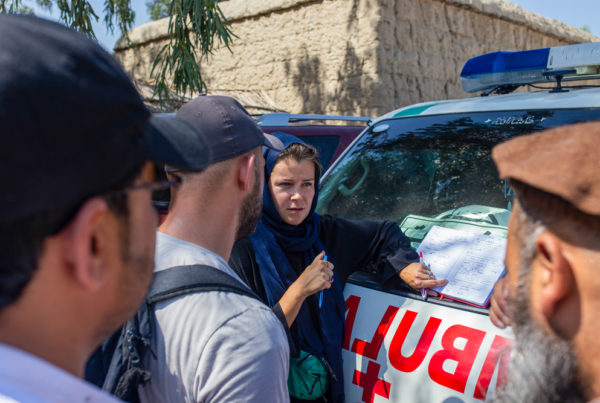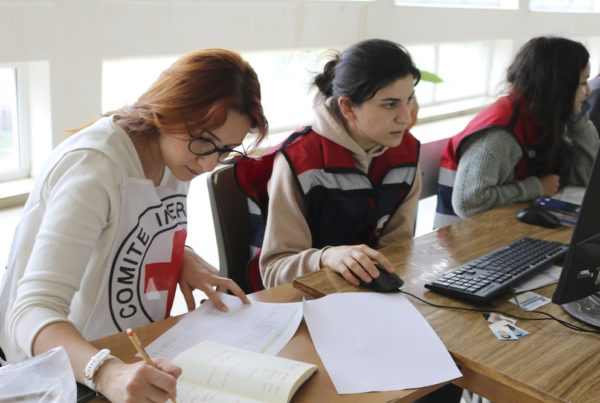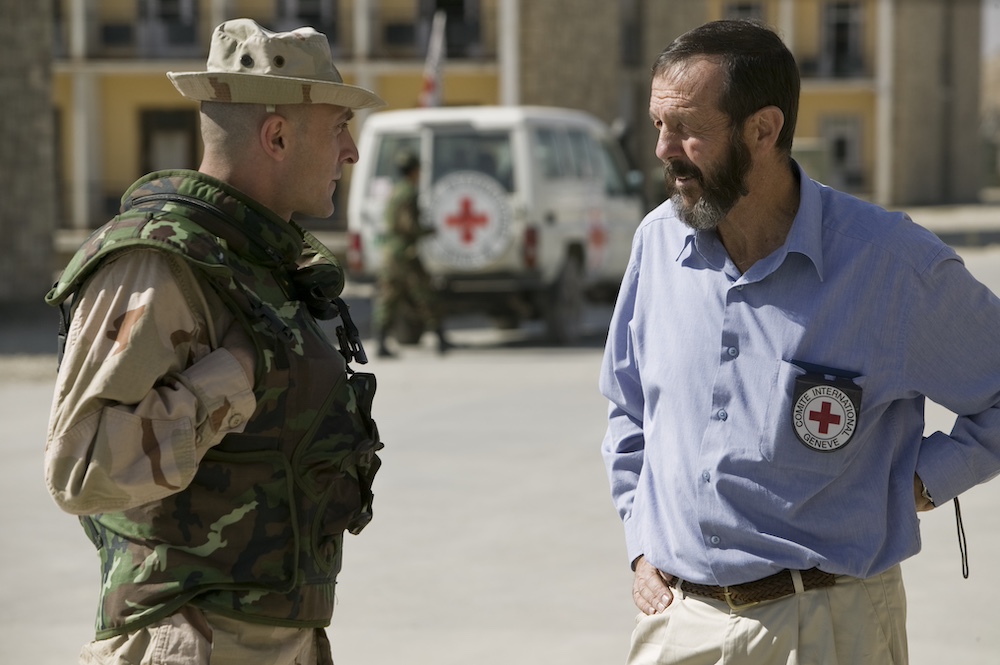
Humanitarian professionals often engage with military personnel out of necessity, as they must work in complex and conflict-affected environments.
Effective humanitarian negotiation with armed forces can help ensure humanitarian access, uphold humanitarian principles, and protect the safety and neutrality of aid workers.
However, working relationships between humanitarian actors and military counterparts aren’t always straightforward. Both arms carriers and humanitarian organisations believe they are well understood by the other, but the opposite is generally true.
Militaries have little idea about humanitarian mandates, while humanitarian negotiators usually lack insight into military decision-making processes. This knowledge gap can make negotiating with the military feel intimidating.
Stephen Kilpatrick, an expert in civil-military relations and advisor on engagement with armed forces at the International Committee of the Red Cross, shares six practical negotiation strategies for humanitarian professionals working with military counterparts.
1. Use your “elevator pitch”
When meeting a military commander or defence official for the first time, make that initial encounter count.
Use your “elevator pitch” to briefly explain your role, your humanitarian organisation, and the purpose of your engagement. Clear and concise messaging helps establish credibility and ensures your mission is understood.
If you are negotiating as part of a team, provide proper introductions. Mention each team member’s role and expertise to clarify who is in the room.
Military officials regularly engage with multiple organisations, so differentiating your humanitarian mandate from others is crucial.
Remember: First impressions matter in humanitarian-military negotiations!

The typology of a negotiation is one of the tools used to structure a humanitarian negotiation. For more information, read how to determine the negotiation type and use it to your advantage.
2. Expect your counterpart to be on the front foot
Force projection, tactical advantage, and operational security are fundamental to military strategy. These principles often shape the way military leaders approach negotiations with humanitarian organisations.
Few armed forces have formal negotiation doctrines tailored for civil-military coordination, so they may adopt a direct and assertive stance when engaging with humanitarian actors.
To navigate this dynamic effectively, use tools such as:
- The negotiation “iceberg” to uncover underlying interests.
- Stakeholder mapping to identify key decision-makers and influencers.
- Typologies of humanitarian negotiation to adjust strategies accordingly.
Whenever possible, rehearse your key messages to build confidence before engaging with high-ranking officers. If necessary, suggest a one-on-one meeting to encourage direct dialogue.
3. Anticipate the security argument
Security is a core principle in military operations, influencing every decision military officials make.
During negotiations, commanders may cite security concerns as a reason to restrict humanitarian access or impose operational constraints.
Since security considerations carry significant weight in military decision-making, acknowledge their importance rather than dismissing them. Instead, prepare well-reasoned counterarguments.
For example, you might argue that being present in the area and seen by all parties to the conflict is the best way to guarantee your safety.
Anticipating and addressing security concerns is key to successful civil-military engagement.
4. Understand the hierarchy
Militaries are hugely hierarchical. Understanding their rank and commands means understanding who you’re talking to.
Addressing your counterpart with the correct rank shows you have done your research and take the meeting seriously. In other words, it shows professionalism.
Equally, being familiar with insignias and medals can help you deduce who you are speaking with.
For instance, you can infer the seniority of your counterpart by the location of their badge on their uniform. If they wear it on their arm, they’re low ranking. If they wear it on their shoulder or chest, it means they hold a position of authority within the military.
Another good idea is to try to understand under which “culture of command” they operate. Some militaries allow responsibility to go down to the lower levels of command; this is a “mission” culture of command. Conversely, if you’re talking to a colonel in a military with “directive” command, you won’t get far because control is vested only in very senior roles.
5. Find out their needs (and how you can meet them)
Identifying a military’s needs and how you can meet them can help your counterpart understand your organisation’s value and gain their acceptance.
A few years back, a humanitarian team met with a general in Myanmar. He was very unconvinced about the organisation’s work in the region; however, a team member identified that his army was interested in the organisation’s prosthetic programme because a lot of soldiers had lost limbs to landmines.
Once the humanitarian team brought their prosthetic specialist to the meeting, the general understood the organisation’s added value. The organisation established a positive relationship with the army and was able to operate in the region safely.
This is a good example of taking the time to understand your counterpart using the negotiation “iceberg”. What are their values, motives, and reasoning? How does this support their position? What needs do they have and how can you help them meet them?
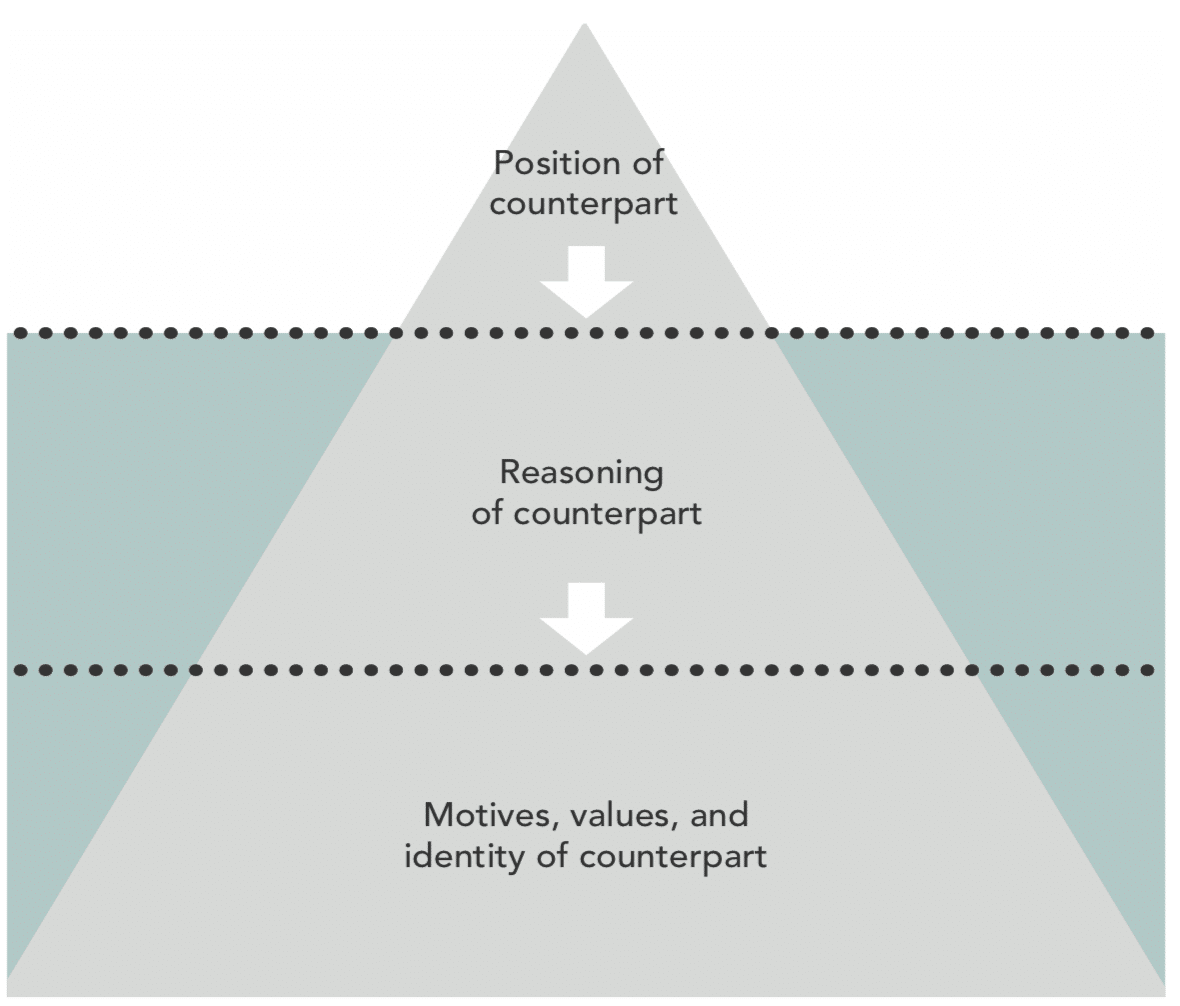
The negotiation iceberg is one of the tools used to structure a humanitarian negotiation. For more information, read how to build common ground with your counterpart.
6. Figure out who is pulling the strings
It’s not what you know… it’s who you know.
There are times when negotiations get stuck (or fail), and all your negotiation expertise can’t make any difference.
Why?
Because you’re talking to the wrong person.
Conducting a stakeholder mapping can help you identify who might be blocking (or “spoiling”) your negotiation and who could influence their position. If you can figure out who is pulling the strings, you might be able to unblock your negotiation deadlock.
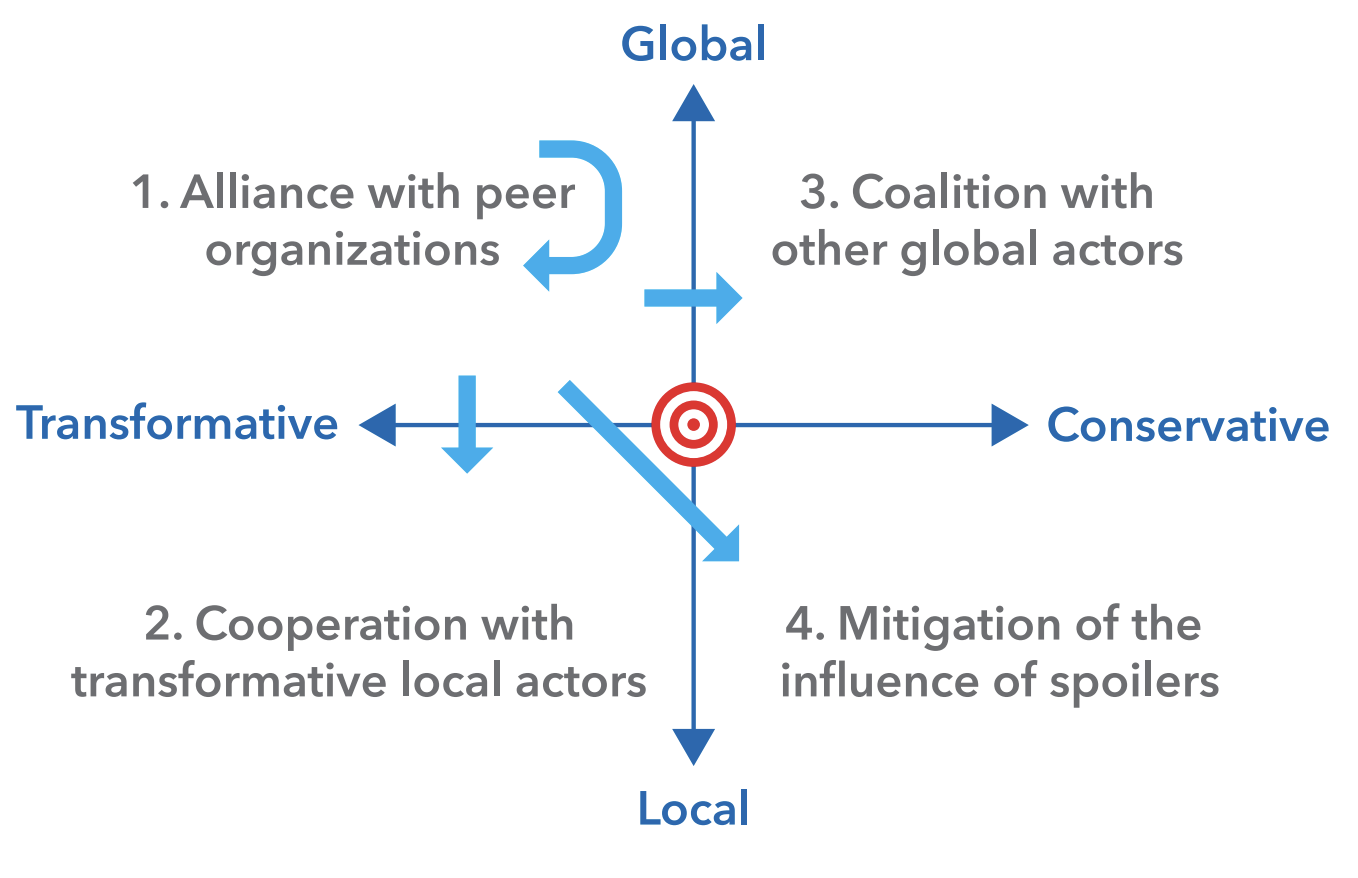
The stakeholder mapping is one of the tools used to structure a humanitarian negotiation. For more information, read the CCHN Field Manual on Frontline Humanitarian Negotiation.
Remember...
When negotiating with military counterparts:
- Do not assume military officers understand humanitarian organisations. Always open with a clear explanation and introduction.
- Expect them to be on the front foot. Most militaries don’t have a negotiation doctrine.
- Acknowledge security concerns, but have a counter-argument.
- Try to understand ranks, appointments and culture of command.
- Understand their needs and find ways you can meet them.
- In case of a negotiation deadlock, figure out who is pulling the strings.


